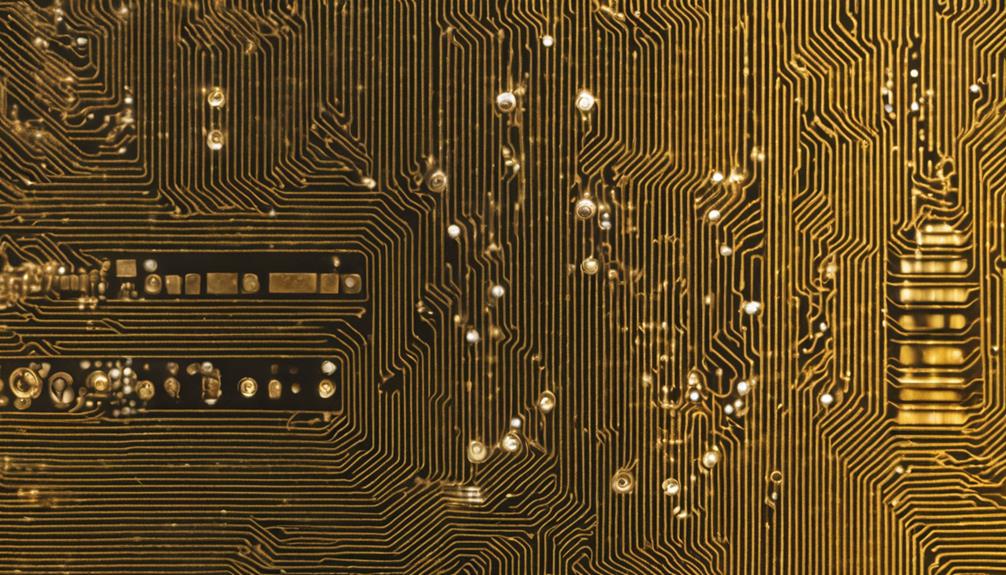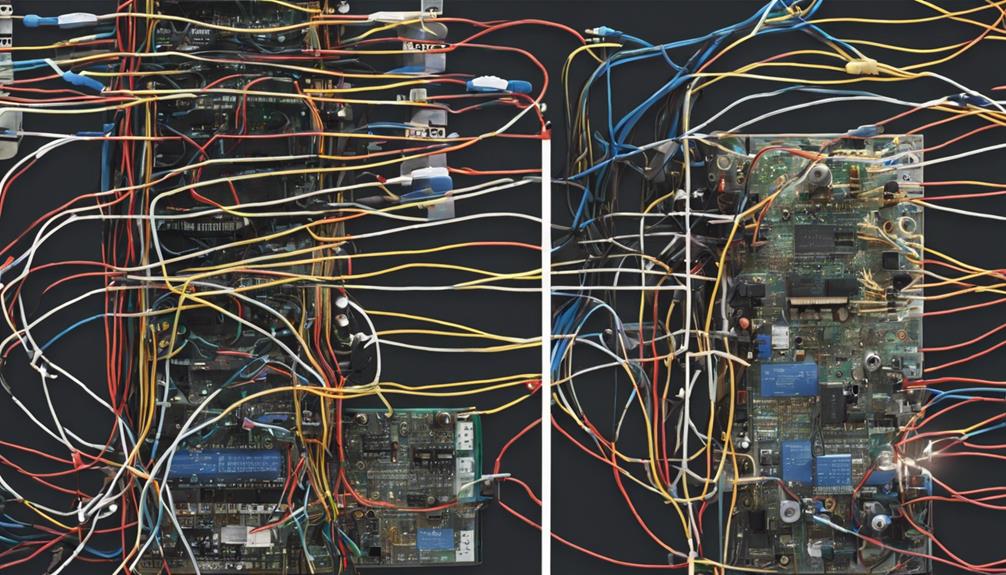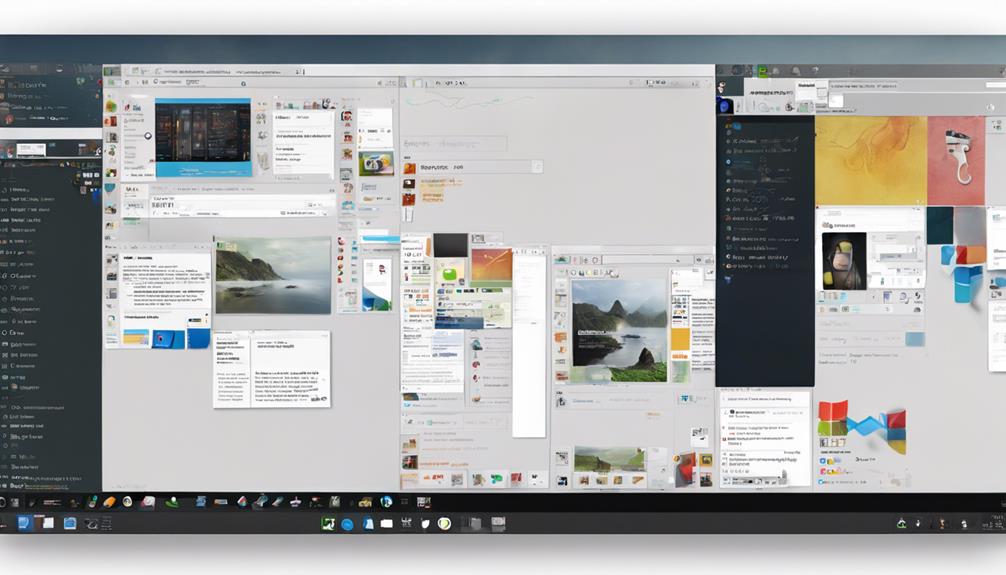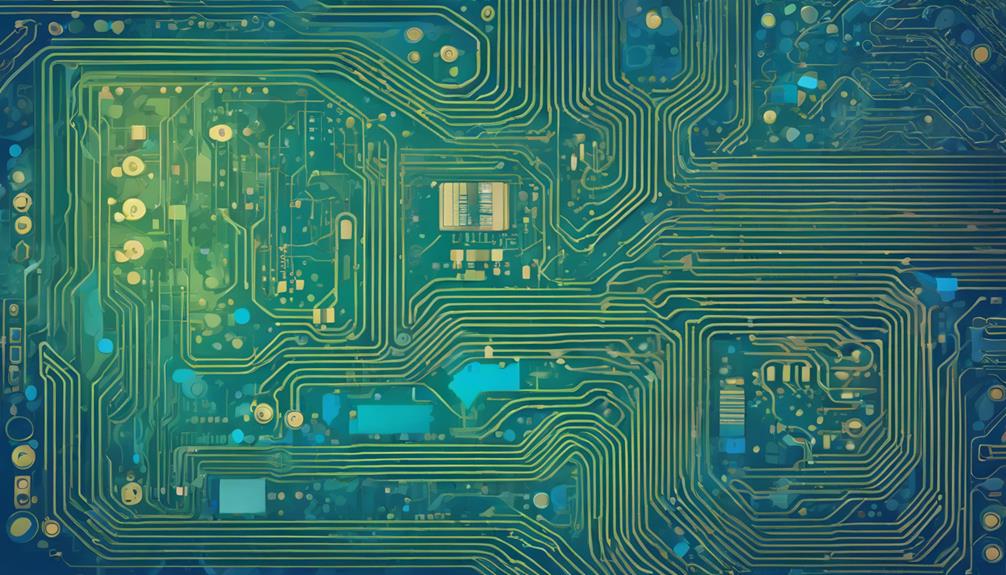To reduce electromagnetic interference (EMI) in printed circuit board (PCB) design, three essential design tips should be considered. First, optimize PCB layer stack-up to minimize EMI emissions, guaranteeing effective shielding and controlled impedance. Second, minimize signal radiation by employing differential signaling techniques, proper grounding, and shielding materials. Finally, route power and ground efficiently, separating power and ground traces while preserving signal integrity and reducing interference. By understanding the intricacies of these design considerations, designers can effectively minimize EMI and guarantee reliable PCB performance, uncovering the nuances of EMI reduction strategies.
Key Takeaways
- Optimize the PCB layer stack-up to minimize EMI emissions by placing signal layers adjacent to ground planes and balancing signal and return paths.
- Employ differential signaling techniques and proper grounding methods, such as solid ground planes, to reduce common-mode noise and signal radiation.
- Efficiently route power and ground signals by separating power and ground traces, creating low-impedance paths, and minimizing voltage drops.
- Use shielding materials and EMI filters to contain and suppress electromagnetic signals, preventing radiation and interference.
- Implement signal routing strategies that minimize loop area and reduce radiation, such as careful placement of power and ground connections.
Optimize PCB Layer Stack-Up
A well-planned PCB layer stack-up is essential for minimizing electromagnetic interference (EMI) emissions, as it enables effective shielding, controlled impedance, and efficient signal routing.
In high-performance PCBs, a properly designed layer stack-up is critical for EMI reduction. This is achieved by placing signal layers adjacent to ground planes, which provides effective shielding and minimizes EMI emissions.
Additionally, placing power and ground planes close to each other in the layer stack-up reduces the loop area, further minimizing EMI emissions. A balanced stack-up that considers signal paths and return paths is also vital in reducing EMI issues.
By optimizing the PCB layer stack-up, designers can ensure controlled impedance, efficient signal routing, and minimized EMI interference. This is particularly important in high-performance PCBs where signal integrity is paramount.
Minimize Signal Radiation

By employing differential signaling techniques, properly grounding signals, and utilizing shielding materials, PCB designers can minimize signal radiation, thereby reducing EMI emissions and ensuring signal integrity in high-performance applications.
Differential signaling techniques are effective in reducing common-mode noise, a vital contributor to signal radiation. Proper grounding techniques, such as using a solid ground plane, also play an essential role in reducing signal radiation.
Shielding materials, like copper foil or conductive coatings, can contain electromagnetic signals, preventing them from radiating outward. Additionally, signal routing strategies that minimize loop area and reduce the chance of radiation are important.
Moreover, incorporating EMI filters and ferrite beads can suppress high-frequency noise and prevent signal radiation. By implementing these design strategies, PCB designers can effectively minimize signal radiation, ensuring reliable and high-performance operation in demanding applications.
Route Power and Ground Efficiently

Efficient routing of power and ground signals is critical to minimizing EMI emissions, as it reduces loop area and prevents unwanted electromagnetic radiation. This is essential to guarantee reliable operation in high-performance applications.
To achieve efficient routing, consider the following key strategies:
- Separate power and ground traces to maintain signal integrity and reduce interference.
- Design a proper power distribution network to guarantee stable voltage levels and reduce noise.
- Utilize solid ground planes and power planes to create low-impedance paths for power and ground signals.
- Carefully place power and ground connections to reduce voltage drops and minimize EMI issues.
Frequently Asked Questions
What Are the Techniques to Suppress Emi?
As the silent saboteur of electronic design, EMI lurks in the shadows, waiting to disrupt even the most meticulously crafted circuits.
So, what are the techniques to suppress EMI? Effective strategies include implementing proper grounding, shielding, and decoupling capacitors to filter out switching noise.
Additionally, isolated power and ground planes, careful signal routing, and low-impedance power distribution networks can help minimize electromagnetic interference.
How to Reduce EMI in PCB Design?
To reduce EMI in PCB design, a multi-faceted approach is essential. Implementing proper grounding and shielding techniques is vital. Strategically placing decoupling capacitors and isolating power and ground planes are also crucial steps.
Additionally, careful signal routing and placing signal layers adjacent to ground planes can greatly minimize EMI. By incorporating these design considerations, PCB designers can effectively mitigate EMI and guarantee electromagnetic compatibility.
What Are Some Other Considerations Required for EMC EMI Design Apart From Using an EMI Filter?
Beyond the use of EMI filters, other important considerations for effective EMC EMI design include implementing robust grounding techniques, judicious signal routing, and careful component placement.
Additionally, separating digital and analog signals, utilizing low-impedance power distribution networks, and incorporating decoupling capacitors are essential.
Moreover, compliance testing and adherence to industry standards, such as CISPR and FCC regulations, are essential to guarantee successful EMI reduction and mitigate electromagnetic interference.
How to Avoid EMI and Emc?
To avoid EMI and EMC issues, designers must adopt a multifaceted approach. Implementing proper grounding techniques, shielding sensitive components, and separating digital and analog signals are vital. Effective shielding, compliance with EMC standards, and careful signal routing are also essential.
Additionally, utilizing decoupling capacitors and following industry best practices can help mitigate EMI and EMC challenges, ensuring reliable and efficient electronic system design.


